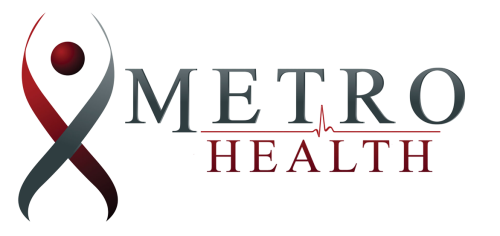If you’ve recently been diagnosed with celiac disease, you’ve been thrust into a new world of learning as much as you can about the condition and how to eat to support your health. It can be challenging to adapt to a celiac-friendly diet and fully understand which foods will support your health and those that will trigger symptoms.
Read on for some tips on how to eat if you’ve just learned you have celiac disease.
What is celiac disease?
Celiac disease is a chronic autoimmune disease that damages the small intestine and prevents it from absorbing nutrients in food. The disease is triggered by eating foods that contain the protein gluten, which is found in barley, wheat, rye and some oats.
If you eat gluten when you have celiac disease, you may experience common symptoms such as:
- Abdominal pain
- Diarrhea
- Fatigue
- Gas
- Heartburn/indigestion
- Nausea
- Skin rash
- Weight loss from malnutrition
Gluten is a common ingredient in foods such as bread, cakes, cookies and pasta. It is also a common ingredient in some personal care products, such as prepackaged foods, lipstick and lip balm, toothpaste, and nutritional supplements.
What to eat when you have celiac disease
After a celiac diagnosis, you will want to switch to a gluten-free diet as soon as possible. Eating a gluten-free diet can relieve painful celiac disease symptoms and heal the small intestine. Because celiac disease is a chronic condition, you will need to follow this diet throughout your lifetime to prevent symptoms and intestinal damage.
Celiac-friendly foods
It can be difficult to give up some of your favorite foods after you’ve been diagnosed with celiac disease. But the good news is there is a long list of safe gluten-free foods you can enjoy to ensure your body gets the nutrients it needs.
You’ll want to ensure you eat whole, nutrient-dense foods, including:
- Fresh fruits and vegetables. Keep in mind that prepackaged foods may not be gluten-free, so stick with fresh produce to stay gluten-free.
- Meats. Beef, poultry, pork and seafood that are frozen or unseasoned at the grocery store are generally safe. Avoid meats that come pre-marinated or have added ingredients.
- Gluten-free grains. Plain varieties of rice, quinoa, corn, amaranth, and buckwheat are safe to eat.
- Beans and nuts. Beans, nuts, and soy are safe to eat, as are flours made from these foods.
- Rice and quinoa. Plain varieties of rice and quinoa are gluten-free and a safe replacement for other grains, such as wheat and barley.
- Eggs and dairy products. Eggs, yogurt, cheese and milk are gluten-free. Some people with celiac disease show symptoms of lactose intolerance, so talk to your healthcare provider if you are unsure.
Tips for following a gluten-free diet
Getting gluten out of your diet is a process, and these tips may help you as you navigate and become familiar with this new way of life.
Read food labels carefully. Gluten-free foods are available at most grocery stores and are clearly labeled “gluten-free”. You’ll want to give yourself ample time to shop at the grocery store to check each label until you are familiar with safe foods and products. It’s important to know that even if something is labeled “wheat-free”, it may still contain gluten. Ensure your pre-packaged foods are clearly labeled “gluten-free” to be sure.
Beware of hidden gluten. Gluten can be found in many foods and beverages that you may not suspect, such as beer, bouillon cubes, candy, cold cuts, potato and tortilla chips, french fries, soups, sauces and seasonings.
Avoid cross-contamination. Cross-contamination occurs when a gluten-free food comes into contact with a food that contains gluten. If others live in your home and plan to continue eating foods that contain gluten, set up your kitchen and pantry so that you have a “gluten-free” space. Have gluten-free tools and utensils and store gluten-free foods separately to prevent unintentional gluten contamination on your utensils and food.
Eating at restaurants. If the restaurant menu does not clearly label certain dishes as gluten-free, you can ask how the food was prepared and ask if there is a gluten-free menu to choose from. Most restaurant menus can be reviewed online in advance so you can be sure to choose a restaurant where you can find something good to eat without the risk of eating gluten.
Talk to your pharmacist about medications. Some medications, including nutritional vitamins and supplements, contain gluten as an additive. Ask your pharmacist or healthcare provider if any of your medications or supplements contain wheat or a wheat byproduct.
Takeaway
It takes time and patience, but the sooner you begin to implement your new celiac-friendly diet, the sooner you will begin to feel better. As you adjust to eating a gluten-free diet, you will become more aware of what you’re eating, how the food is made, and how it benefits your health. A celiac-friendly diet is high in nutrient-dense, whole foods that not only help reduce your celiac disease symptoms but may improve your overall health.
If you have questions, your healthcare provider or a registered dietician can provide guidance on what to eat and drink to help you feel your best.

